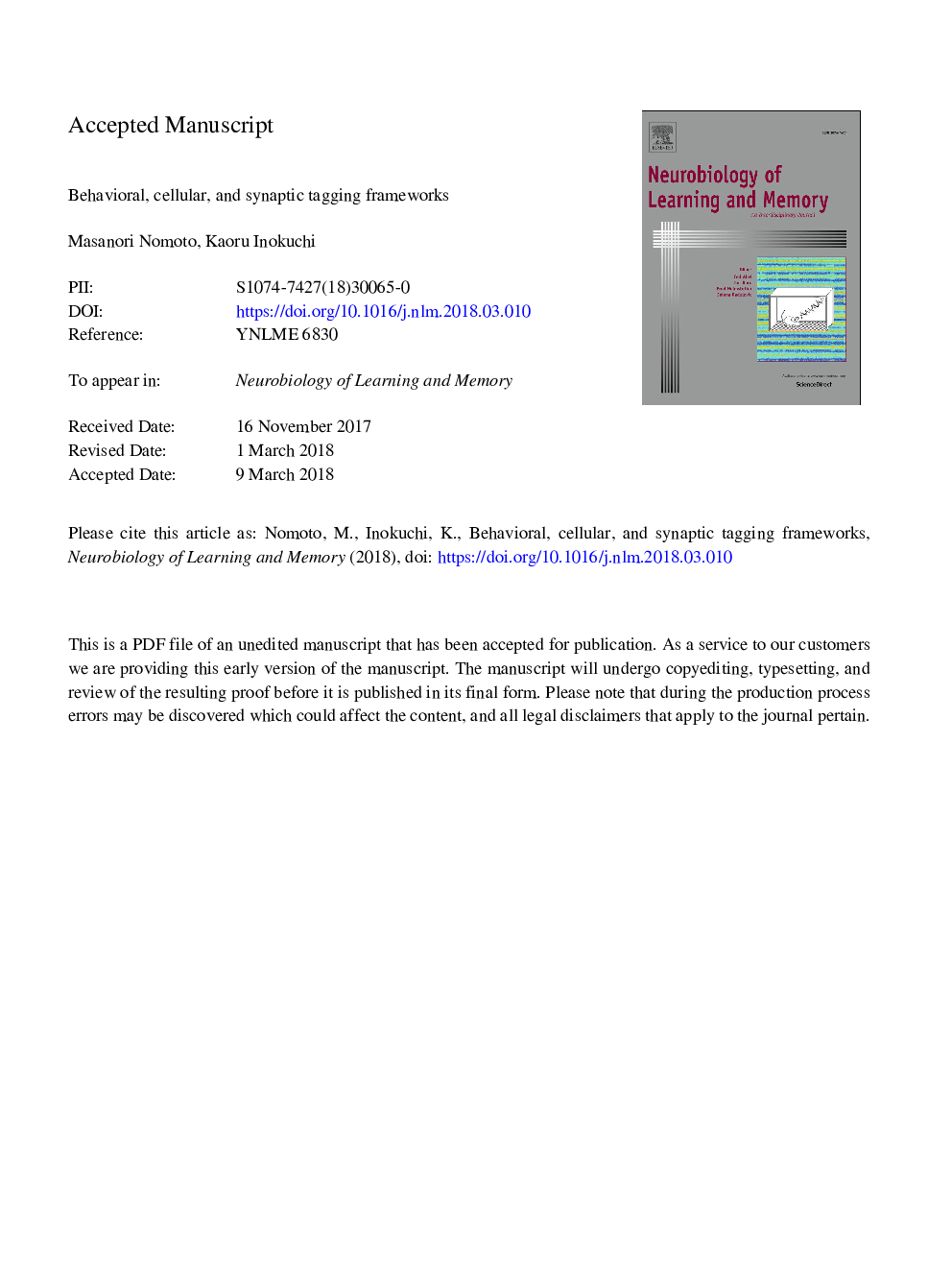| Article ID | Journal | Published Year | Pages | File Type |
|---|---|---|---|---|
| 7298725 | Neurobiology of Learning and Memory | 2018 | 43 Pages |
Abstract
Behavioral tagging is the transformation of a short-term memory induced by a weak experience into a long-term memory through temporal association with a novel experience. This phenomenon was discovered to recapitulate synaptic tagging and capture at the behavioral level. Significant progress has been made in determining the molecular machinery associated with synaptic tagging and capture and behavioral tagging theories. However, the tag setting and recruitment of plasticity-related proteins that occur within the spatiotemporally constrained cell ensemble at the network level (cellular tagging) in the brain where multimodal sensory information is input are just beginning to be understood. Here, we review the evidence for behavioral tagging and the mechanism underlying memory allocation at the network level leading to the overlap of cell ensembles. We also discuss the functional significance of overlapping cell ensembles in association of standard Pavlovian conditioning and distinct memories. Finally, we describe the role of neuronal ensemble overlap in behavioral tagging.
Keywords
Related Topics
Life Sciences
Neuroscience
Behavioral Neuroscience
Authors
Masanori Nomoto, Kaoru Inokuchi,
